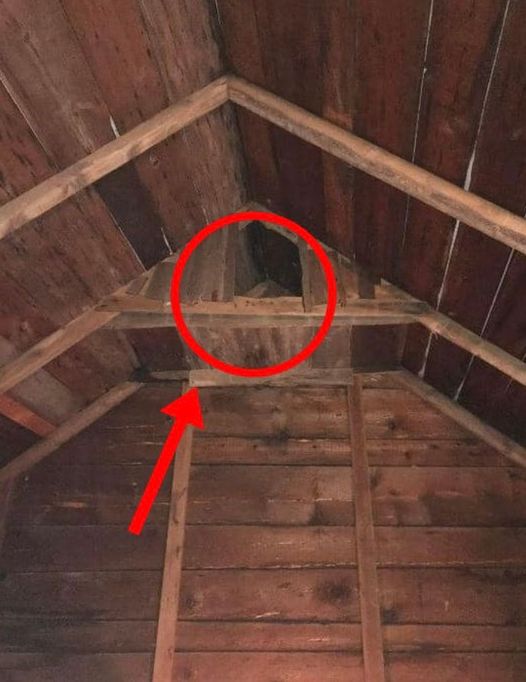When you inherit an old barn, you expect to find dust, cobwebs, and maybe some antique tools. But what if you stumbled upon a strange, small room that defies explanation? This was exactly my experience with my ancient barn’s loft, a discovery that left me both puzzled and intrigued.
The Discovery
The barn had been in my family for generations, nestled in the quiet countryside. As a child, I played in its shadows, never suspecting that it held a secret. It wasn’t until I inherited the property and began renovations that I uncovered a peculiar feature: a small, concealed room at the top of the barn. This room, seemingly out of place, had no obvious purpose and sparked a myriad of questions.
Historical Significance of Barns
Barns have always been integral to rural life, serving as more than just storage for hay and livestock. They were community hubs, workshops, and sometimes even makeshift shelters. The design and structure of a barn could tell you much about the era it was built in and the lives of those who used it. This added another layer to the mystery of my barn’s secret room.
An Unexpected Find
During the renovations, we aimed to restore the barn while preserving its historical essence. It was a daunting task, given its age and the wear it had endured. One day, while clearing out the loft, a portion of the wooden wall felt unusually hollow. Curiosity piqued, we pried it open, revealing a small, hidden room. It was no more than six feet by eight feet, with a low ceiling and a single, narrow window that let in just enough light to see the dust motes dancing in the air.
A Room with No Clear Purpose
The room was empty, devoid of furniture or any signs of its use. It had sturdy wooden floors and walls, suggesting it was built with some care. But why? Theories ranged from it being a storage space for valuables, a hideout during turbulent times, or even a sanctuary for wildlife. The last theory wasn’t far-fetched, given the barn’s history of housing barn owls and other creatures.
Barn Owls: Guardians of the Night
Historically, farmers welcomed barn owls into their barns. These birds were natural pest controllers, hunting rodents that threatened crops and supplies. To encourage their presence, farmers would build nest boxes within the barns, a practice blending agricultural needs with ecological balance. These nests, often placed in high, quiet corners, allowed owls to thrive undisturbed by human activity.
A Legacy of Coexistence
The relationship between farmers and barn owls was one of mutual benefit and respect. Farmers recognized the owls’ role in maintaining the balance of nature and incorporated them into their farming practices long before modern conservation efforts. This tradition, passed down through generations, underscored the deep connection between humans and the natural world. The hidden room in my barn, though not an owl’s nest, might have been another manifestation of this tradition.
Theories and Speculations
As I delved deeper into the barn’s history, I consulted local historians and older community members. Some suggested the room could have been a makeshift shelter during storms or harsh winters, providing a safe space away from the elements. Others speculated it might have been used to store important documents or family heirlooms. Each theory added a piece to the puzzle but left the central question unanswered.
The Charm of the Unknown
In the end, the room’s original purpose remained a mystery. And perhaps that’s what makes it so fascinating. It stands as a testament to the barn’s long history and the lives that intertwined within its walls. The room, whether a forgotten storage space or a deliberate secret, adds to the charm and allure of the barn.
Embracing the Mystery
While the renovations continued, we decided to preserve the hidden room as it was. It became a point of interest, a conversation starter for visitors, and a source of endless speculation. Sometimes, the beauty of such discoveries lies in their ambiguity. They remind us of the countless stories and secrets that old buildings hold, waiting to be uncovered.
Conclusion
Uncovering the small room in my ancient barn was more than just a renovation surprise. It was a journey into the past, a glimpse into the lives and practices of those who came before us. Whether it was a forgotten storeroom, a hideaway, or something else entirely, the room symbolizes the rich history embedded in the barn. It stands as a reminder that sometimes, the most intriguing stories are those that remain partly untold, inviting us to imagine and wonder.
So next time you walk into an old building, remember: every corner might hold a secret, every wall might hide a story, and sometimes, the smallest rooms have the most to say.

